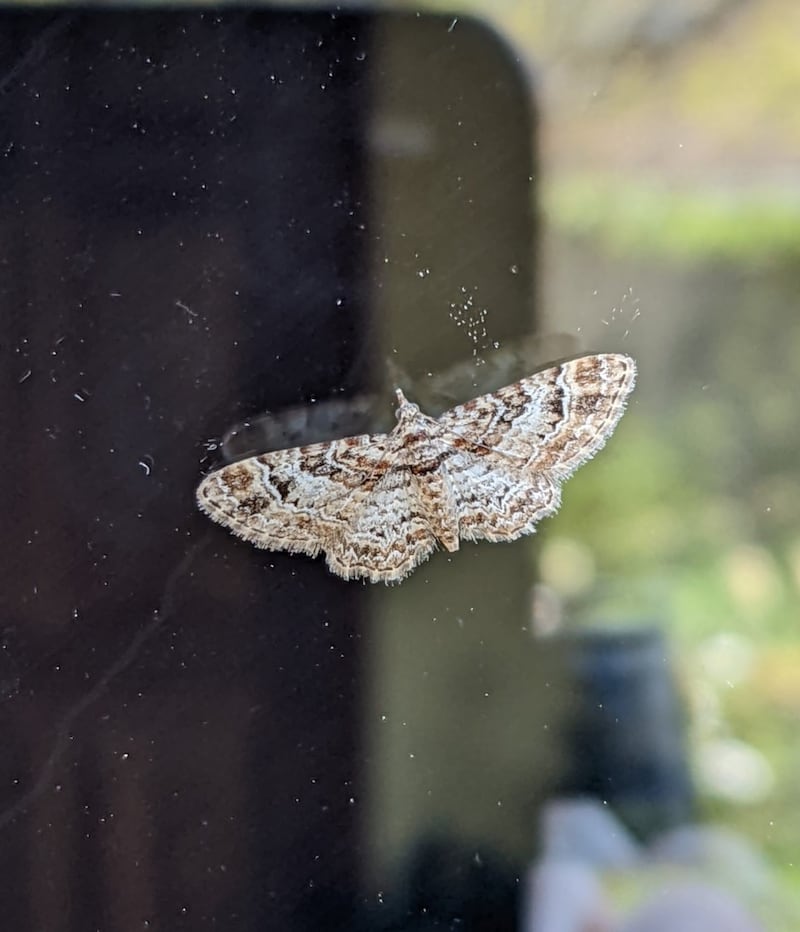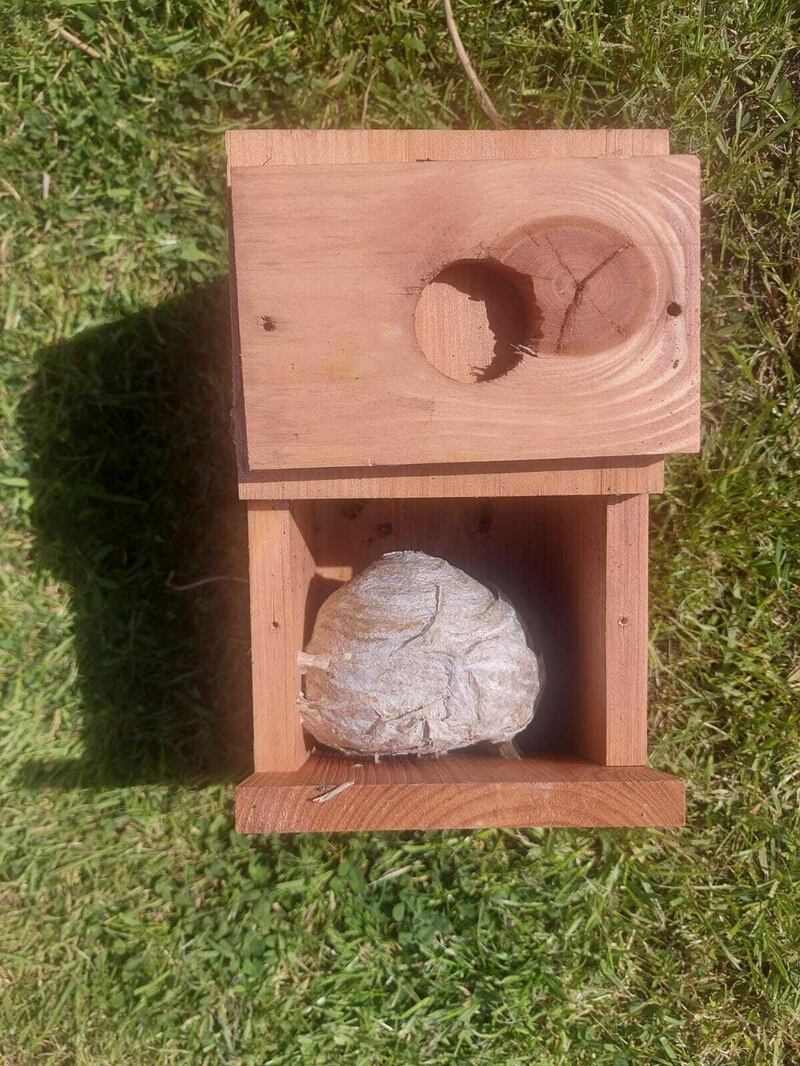We have a lovely, friendly robin visiting outside our back door. But this little guy is different from other robins. He has fluffy hair or feathers standing up all the time. Why is this? — Angela Treacy, New Ross
This is a worn-out parent whose plumage is in rag order after an extremely busy time rearing and fledging its chicks. It has now begun moulting, which means it will drop and then regrow the body feathers, a process that will take several weeks. This means it will be in the best possible condition for the colder winter weather to come.

This small brown butterfly (or moth?) was on my outside kitchen windowpane on a recent warm sunny day. It measures about 140mm x 70mm. I haven’t been able to identify it. — Mary Quinn
It is a moth, as it rests with its wings open flat. It is a pug, probably a double-striped pug, though they are notoriously difficult to tell apart — microscopic examination of the genitalia is often needed. The colour of its caterpillars depends on which food plant they have been feeding on; they can be pink, yellow, white or green.
RM Block

We found this nest in our little garden birdbox. Will it get bigger and what should we do with it? — Alfie Fitzgerald (10), Sligo
Close the door and stay well away from it, so that you don’t disturb it. It is a wasps’ nest, and it may very well get bigger if it has room to grow inside the nest box. The wasps will spend all summer collecting the greenflies and other aphids from your garden to feed the baby wasp grubs, which in turn provide a sugary liquid for the adult wasps to eat. This way of living breaks down in late August when the queen wasp dies.

I had just cut my garden hedge and then noticed this little fellow on the compost bin. Is it a ladybird? — Paul Aiken, Belfast
It is a 14-spot ladybird, which can be very variable in appearance.
Have you a nature query, observation or photo you would like to share with The Irish Times? Submit it, with location of the image, via irishtimes.com/eyeonnature


















